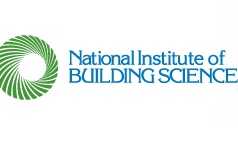U.S. Green Building Council Launches New LEED Scoring Tool for Homes at RESNET Conference
LEED Scoring Tool first of its kind for the LEED for Homes program
Lake Buena Vista, FL – March 2, 2011 – (RealEstateRama) — The 2011 RESNET Building Performance Conference was the venue for the U.S. Green Building Council’s launch of a new online scoring tool for green homes. The LEED for Homes Scoring Tool is a web-based application that offers anyone an easy way for anyone to explore the LEED for Homes green home building program. By easily and simply breaking the LEED for Homes rating system down into either a Quick Score path and a deeper dive Credit by Credit path, all project team members can better understand which green features they want to incorporate into a new green home. “The LEED for Homes Scoring Tool will help fill in the gaps for home builders and home owners alike,” said Nate Kredich, Vice President of Residential Market Development, U.S. Green Building Council. “It is one of the simplest tools on the market for green home building that anyone can use; the credit by credit path encompasses the entire LEED for Homes program, showing you that you may be closer to achieving LEED certification than you think.” The Quick Score path is intended for people new to green building and allows users to explore LEED and answer very general questions about green building. The Quick Score path provides an approximate certification level and a list of things that would be required in order to be in the ballpark for certification. Users have the option of proceeding to the Credit by Credit path in order to fine tune their score and learn detailed information about the LEED for Homes rating system requirements. The Credit by Credit path is a walk-through of the rating system with a built-in checklist in which people can read the credit requirements and indicate their intentions for that specific credit. It calculates the points for each LEED credit category, checks to make sure that all the pre-requisites are checked off and ensures that the minimum point floors are attained. The Scoring Tool is also useful as a project management tool for project teams working on multiple projects or looking to see how different iterations of the same project fare in the LEED for Homes rating system. Visit www.leedforhomes.org to try it out. U.S. Green Building Council
The Washington, D.C.-based U.S. Green Building Council is committed to a prosperous and sustainable future for our nation through cost-efficient and energy-saving green buildings.
With a community comprising 79 local affiliates, 16,000 member companies and organizations, and more than 162,000 LEED Professional Credential holders, USGBC is the driving force of an industry that is projected to contribute $554 billion to the U.S. gross domestic product from 2009-2013. USGBC leads an unlikely diverse constituency of builders and environmentalists, corporations and nonprofit organizations, elected officials and concerned citizens, and teachers and students.
Buildings in the United States are responsible for 39% of CO2 emissions, 40% of energy consumption, 13% water consumption and 15% of GDP per year, making green building a source of significant economic and environmental opportunity. Greater building efficiency can meet 85% of future U.S. demand for energy, and a national commitment to green building has the potential to generate 2.5 million American jobs.
LEED
The U.S. Green Building Council’s LEED green building certification system is the foremost program for the design, construction and operation of green buildings. Over 40,000 projects are currently participating in the commercial and institutional LEED rating systems, comprising over 7.9 billion square feet of construction space in all 50 states and 114 countries. In addition, nearly 10,000 homes have been certified under the LEED for Homes rating system, with more than 45,000 more homes registered.
By using less energy, LEED-certified buildings save money for families, businesses and taxpayers; reduce greenhouse gas emissions; and contribute to a healthier environment for residents, workers and the larger community.
For more information, visit www.usgbc.org.
Contact :
Marisa Long External Relations Manager, USGBC
Follow us on Twitter at @USGBC














